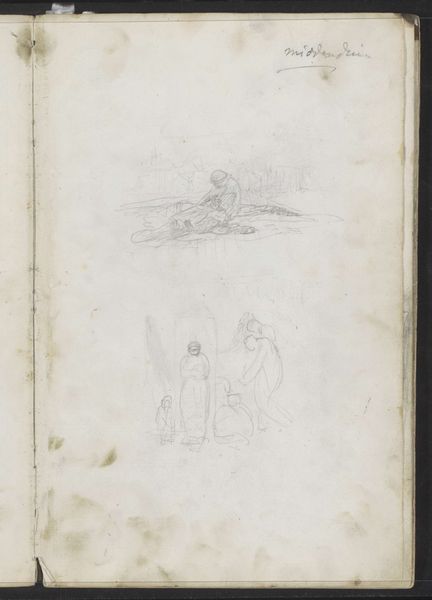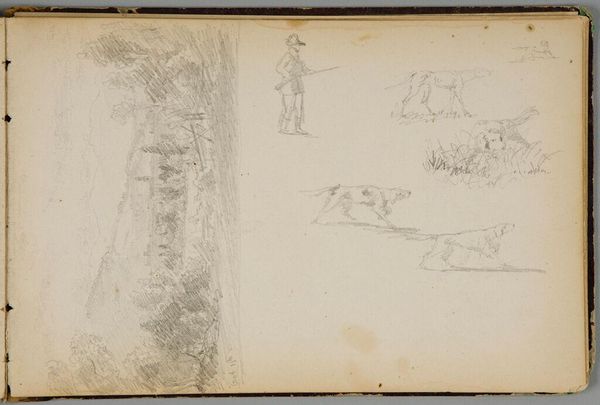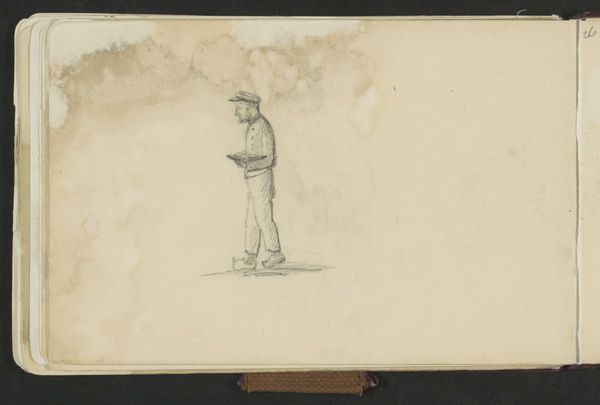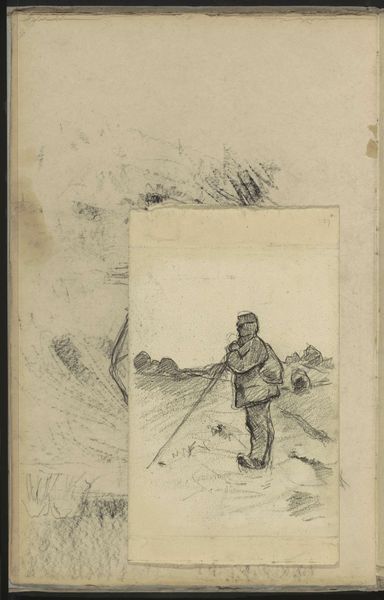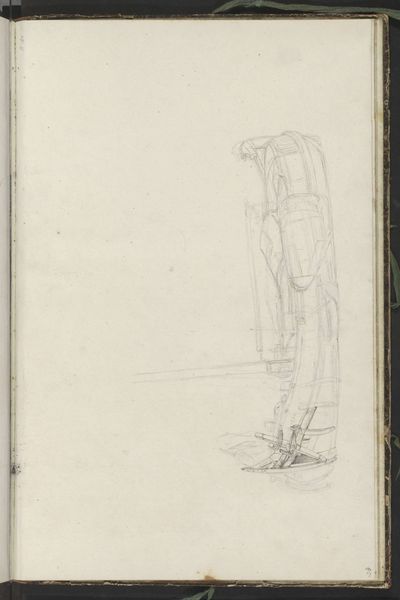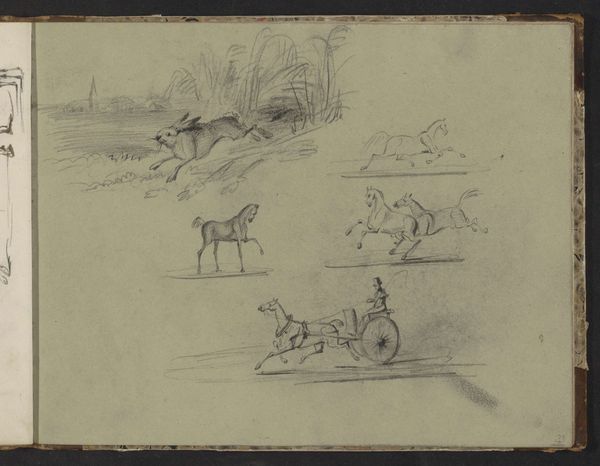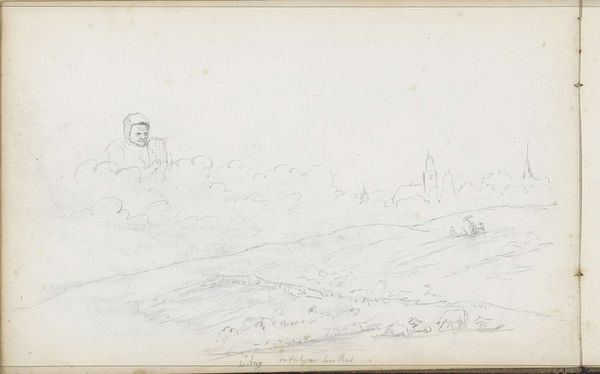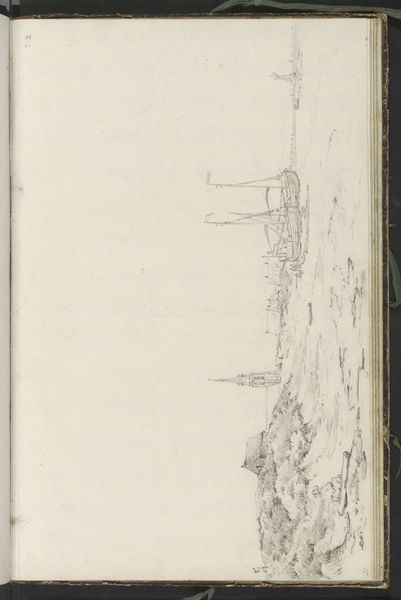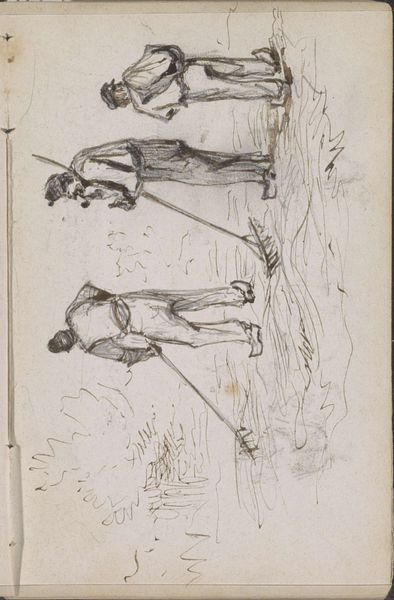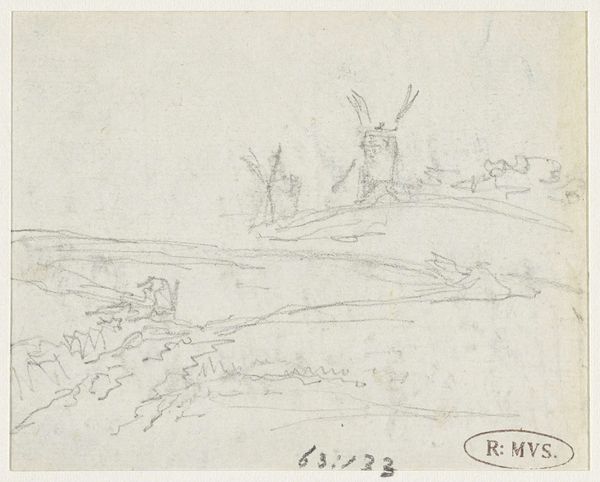
Copyright: Rijks Museum: Open Domain
Curator: Jozef Israëls' drawing, "Rokende man op een duintop," or "Smoking Man on a Dune Top," created circa 1855 to 1859, presents a stark landscape scene rendered in pencil. It's currently held at the Rijksmuseum. What are your initial impressions? Editor: It strikes me as solitary. There's a lone figure, seemingly lost in contemplation, framed by the vastness of the dunes. The hazy pencil strokes add to this sense of isolation, almost like a visual representation of existential reflection. Curator: Israëls often focused on the lives of ordinary people, particularly those connected to the sea. This drawing aligns with the Realist and Romantic movements, blending objective observation with emotional resonance, wouldn't you agree? Editor: Absolutely. But there’s also a distinct commentary embedded in the mundane. Who is this man? What labor, if any, sustains him, and what kind of social alienation contributes to such lonely scenes of reflection? It demands we look beyond the aesthetics to the lived experiences. Curator: Indeed. The work exists in a fascinating historical context. Israëls lived through periods of immense social and political change in the Netherlands, all likely influencing his portrayal of these humble individuals. The sketch almost monumentalizes this ordinary man within the grandeur of the landscape. Editor: I see it almost like Israëls is making a statement about class and labor itself. Even the composition of the man perched on top of the dunes can be seen as highlighting notions of labor, and a certain vulnerability even amid the strength evoked by this solitary posture. Curator: It’s a captivating work because it manages to say so much with so little. The simplicity of the medium combined with the careful composition invites endless interpretations. The man’s gaze is directed toward the horizon, as if contemplating an uncertain future. Editor: Ultimately, Israëls compels us to consider not just what it means to be human, but also what it means to be a part of a society that often marginalizes those who exist on its fringes. Curator: A poignant reminder of the power of art to reveal and critique social realities. Editor: Exactly. It's a reminder of the ongoing struggles for equity and recognition—struggles which continue to shape artistic production today.
Comments
No comments
Be the first to comment and join the conversation on the ultimate creative platform.
